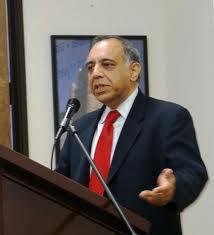Metropolitan Lahore – Economic Geography, Labour Markets, and Growth
The point of departure for this project is the evidence that local economic growth in a city or region is a function, among other things, of the size and quality of its labour market. It is reported that, holding all other things constant, a doubling of the size of the labour market can increase worker productivity by up to 60 percent.
This project explores various dimensions of the size of the labour market in Lahore and its surrounding region. As a measure of effective size of a labour market, the project employs what is now becoming the standard measure – the population residing within a one-hour commuting distance of a designated point using the most common mode of transport.
Data from the Government of Punjab’s Urban Unit would be used to identify high-density employment and residential sites in Lahore. Field workers equipped with GPS-enabled cell phones and maps would then travel by the predominant mode of transport along all roads radiating out from the respective reference points. They would commute for an hour marking coordinates at 15-minute intervals to yield a number of one-hour commute circles within Lahore. These would be mapped onto census tracts to compute the approximate size of the population resident in each circle.
A similar conceptual approach and design would be used to investigate aspects of Lahore’s regional economy. The objective would be to determine the extent to which a metropolitan economy with an integrated labour market exists or whether small cities surrounding Lahore constitute separate labour markets. In the latter case, the situation would represent an urban geography in which neighbouring cities might be linked by trade but are not part of one labour market.
The end goal of both these exercises would be to illustrate visually the number and size of various labour markets within Lahore and in its surrounding region at this point in time. These would provide the baseline for infrastructure plans aimed at cost-effective optimization of the growth of selected labour markets over a given period of time. By their very nature these targets would be susceptible to easy monitoring using the same methodology as in this project.
The project would aim to provide very preliminary estimates of the economic gains that could result from improved connectivity within and around the metropolis. For this purpose an analysis of the impact of the recently inaugurated Bust Rapid Transit (BRT) along one route in Lahore would provide some evidence for assessment. Based on observations, the project would also identify possible second-order effects of the BRT for subsequent research.
There is one final component in this project included as a speculative scoping exercise for determining directions for future synergistic research. This aims to find simple indicators of the economic health of small towns – i.e., whether they are buoyant or stagnant. This is a particular challenge in an environment with sparse data at the city level and in the absence of a population census for over 15 years. The utility of such an indicator from a planning perspective would be to prioritize the types of investments needed in the different types of small cities. For example, the buoyant cities might be first in line for increased connectivity with the metropolis.
The research findings are expected to influence policies intended to increase economic growth, in particular, by raising worker productivity via the increased size of labour markets. In addition, the findings would yield clear targets for cost-effective transport infrastructure investments that would be amenable to monitoring over time. Short-run improvements would result from the identification of existing congestion and choke points in high density areas that could be ameliorated through better management and control. Second-order benefits would accrue for the design of policies aimed at improved urbanization, governance and accountability outcomes.
The results of this research would be of interest to the provincial government, the Urban Unit, the Lahore Development Authority, the Lahore Ring Road Authority, and representatives of small cities surrounding Lahore.



